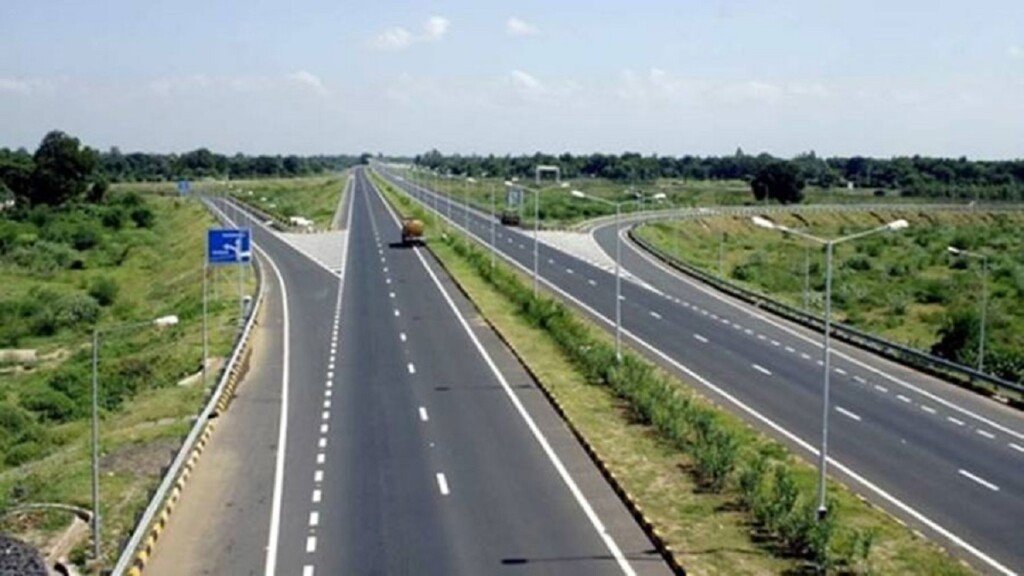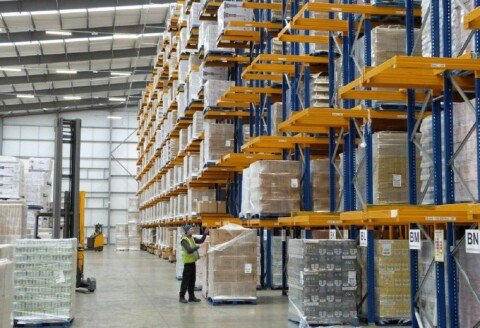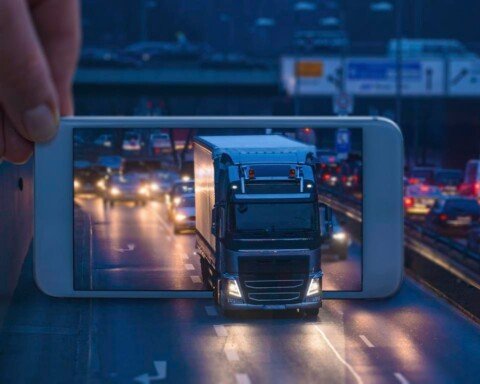Pandemic pressures notwithstanding, the government is going ahead with its ambitious eco-friendly “Green Highway Corridors” project across the country for seamless and efficient movement of cargo. The centre’s recent initiative to invest a staggering rupees seven trillion on Greenfield highways (using advanced engineering techniques, technology and intelligent infrastructure) has simply enthused Indian freight forwarders who are expecting more efficiency to trickle in country’s Road Transportation segment. Ritika Arora Bhola reports...
Green Infrastructure: harbinger of growth
Developing “Green Highway Corridors” has been on the top of the Indian Government’s “To-Do” list agenda for quite some time. Union Road Transport Minister has been talking about this concept quite passionately and the kind of dramatic changes it will induce in the road transportation sector in the country.
The decks have been finally cleared for this gigantic and path-breaking initiative. The government recently announced its plans to spend `7 lakh crore on building “Green Express Highways” which finally paves the way for the creation of “Green Road Freight Infrastructure” in the country in the coming years. Union Road Transport and Highways Minister, Nitin Gadkari recently announced, “The green express highways will be constructed through modern technology which in turn would provide smart transportation and reduce pollution.”
The minister added, “In fact, `1 lakh crore ‘Delhi-Mumbai Expressway’ is likely to be completed within a year while Delhi-Meerut Expressway will be inaugurated in next few months.”
This is definitely a ‘Smart’ and much-needed move which provides a sigh of relief to the Indian freight forwarders, transporters and environmentalists as the ‘Highways’ are being built with the state-of-the-art engineering techniques and infrastructure to provide ‘Intelligent Traffic’ while taking care of the ecology and environment conservation with an aim to reduce greenhouse emission.
“Building Green Express Highways is a visionary initiative of the Government,” states Uday Sharma, COO, Spoton Logistics. “As suggested by the Minister, this initiative will provide smart transportation infrastructure, bring down the cost of logistics, and also go a long way towards reducing the pollution. To say the least, India has a lot of work to do in terms of developing the road infrastructure and connectivity. However, in the last decade or so, we have seen a significant progress on this front. I am very confident that the same momentum will go on in the future as well,” he further adds.
Sanjay Bhatia, Co-founder and CEO, Freightwalla responds no differently when he says, “This move is quiet welcoming and would definitely boost the roadway transport by reducing cost and time considerably and also be environment friendly. These expressways would prove to be a milestone in the logistics and transport infrastructure in the country.”
However, Bhatia also underlines the point that the state governments must also contribute their bit with uttermost sincerity. “The State governments have a significant role to play in ensuring connectivity beyond national highways, while ensuring last-mile connectivity, providing strategic locations for logistics facilities and transport amenities. Therefore, if challenges such as prioritisation of projects funding shortfalls and limited institutional capacity at state level are addressed, the ambitious targets can be achieved,” adds he.
Focussing on the ‘Smart Transportation’ Hima Parvataneni, CEO, Navata Supply Chain Solutions opines, “India is ready for the leap towards smart transportation. The rapid penetration of mobile network and internet availability into tier 2, 3, 4 cities and other remote areas has facilitated this growth. We are now able to do end-to-end tracking of our fleet. Another step towards ‘Smart Transportation’ is the implementation of compulsory ‘FASTag’ leading to a decrease in delays in highways and expressways. The new Delhi-Mumbai Expressway is also bringing in a scheme of ‘Closed Tolling’ in which you only pay for the distance travelled.”
“We are showing the world how digital revolution is fueling a new growth path for India. Logistics is definitely taking the lead here, highway construction has already exceeded the current fiscal year’s target of 11,000 km (30 km/day), itself a record, and is poised to touch 40 km/day by the end of the year as per ministry of road transport and highways. We are entering into an era where we will see electric trucks on these 8 lane highways, ultra smart vehicle tracking systems and GPS based tolling,” emphasises technology leader, Amar More, CEO, Kale Logistics.
Smart Technology, Engineering Techniques & Intelligent Infrastructure
The Green National Highways Corridors Project is the ultimate dream of the Indian government. World-class highways are being constructed using advanced engineering techniques, infrastructure and technology. India is already witnessing autonomous vehicles gradually finding their way onto the roads resulting in some fascinating developments in India like:
Vehicles which have data centers equipped with sensors and actuators, with micro-computers running over 100m lines of code.
Sensors which connect vehicles to other vehicles and the surrounding infrastructure, prevent collisions, and ensure smooth traffic flow.
CCTV feeds combined with sensor data enable smart parking, traffic light management, and rapid emergency response.
Vehicle tracking systems are being used for fleet management and public transport management.
Internet of Vehicles (IoV) helps in timely preventive maintenance to keep vehicles on the road more than in the workshop.
As the stress on road networks intensifies, there is a focus on using acoustic sensors to convert the existing embedded fiber optic infrastructure into various distributed sensors to manage traffic flows and reduce emissions intelligently.
Highways in various locations in India are also being developed by integrating safe and green technology designs such as local and marginal materials, industrial by-products, and other bioengineering solutions as it helps in reducing industrial residue, wastage, and greenhouse gas (GHG) emissions in the construction and maintenance of highways.
“This project will set new standards in the construction of safe Motorable roads,” says Sharma. “The industry has already started witnessing some initial impact on the phases where the corridor is now operational (for example, Delhi-Meerut highway). This will also set the example for many state highways, as the country yearns to have a safe and green road transport infrastructure,” he further adds.
Hima, on the other hand, points some critical issues which should not be ignored. “There is going to be some amount of ecological disruption as these expressways pass through very sensitive areas. What can be done will reduce its impact. In the Delhi-Mumbai expressway, Animal bridges are being built along the Ranthambore to facilitate the safe and smooth passage of wildlife. The bridges are said to be built every 500m intervals. Underground stretches built in the expressway will have a boundary wall of 8m with noise barriers so that the animals are not disturbed. Solar power is also installed along the expressway. This will not only power the lights at night but also activate the water pumps which will water the plants along the highway. Water is collected from rainwater harvesting sites on either side of the road.”
Dedicated Lane for EVs
A separate electric highway lane for electric vehicles is also an integral part of the government’s green highway project plans and the industry is truly excited about the future of electric highway lanes and E-highways.
This is certainly an important decision of the Government to support e-mobility in the country, especially in the commercial space. “Over a longer time period, we can expect more fleet operators to move over to e-mobility, given the range of Government incentives, including a separate electric highway lane. This will also help in reducing India’s carbon footprint,” notes Sharma.
Throwing light on the advantages, Hima says, “E-highways will include hybrid trucks passing through lanes with overhead electric cables and sub-stations by the side of the roads. The electric truck lane transportation can bring down the emission to almost zero while greatly reducing the operational costs. It combines the advantages of electric railways without the last mile hassle of loading and unloading goods causes by trains. It is expected to bring down the logistics cost by as much as 70 per cent.”
She adds, “As a step towards green and clean fuel, we are experimenting with bio-fuel to power our trucks. The use of bio-fuel has bought down our emission rates as well as operational costs. The only challenge is that we are facing a few issues during cold weather conditions due to the high viscosity of the fuel. We are also exploring options to use EV vehicles for last-mile delivery.”
Expected Bottlenecks
With the focus on green infrastructure, the government’s latest initiative is believed to offer various benefits like reduction in air pollution, traffic jams and minimising logistics and transportation costs. The Prime Minister has set a target of Rs 111 lakh crore under the ‘National Infrastructure Pipeline’ and it would be the government’s effort to adopt a green approach and ‘development without destruction,’ motive.
No doubt, there are numerous benefits of having Green Infrastructure and accomplishing it will make India rank amongst the top economies. But much on the expected lines, there are many challenges involved when it comes to freight transportation via road.
India’s logistics market is worth as much as US$ 160 billion, and the road logistics is the leading segment in this equation. Yet most road logistics participants—truckers, transporters, retailers and freight forwarders—complain of various issues like inadequate infrastructure, high costs, high fuel rates, lack of trained drivers, etc. which result in inefficiency and delays.
Addressing the concern, Sharma states, “The primary mode of freight cargo transportation in India is roads. About 60 per cent cargo in the country moves by road. Despite such a high dependence on the road networks, there are many challenges. Inadequate road infrastructure, multiple checkpoints, congestion, lack of skilled drivers and staff, sudden hike in fuel cost are some of these. Due to one or more of these factors, very often, logistics and transportation companies fail to meet their committed timelines.”
Bhatia also reiterates, “High operational cost has been one of the main dreaded challenges in the road freight industry. Besides rising fuel costs, traffic, time, vehicle maintenance, the poor condition of roads have also been adding significantly to damage of goods and vehicles. All these things contribute to increasing the transport cost making road transport a very time consuming and expensive mode for logistic providers.”
Another main challenge, as market observers point out is related to the speed of the trucks and containers. While the trucks in developed countries travel around 1000 kms a day, trucks in India travel only around 300 kms a day. This causes massive delays in the delivery of shipments which in turn amasses backlog. The development of the green and smart highway network is expected to address the above mentioned challenges to a considerable extend.
When it comes to ‘Smart transportation,’ technology plays a critical role. For efficient and seamless movement of cargo, technology is vital. The implementation of GPS tracking system, RFID, FASTag technology, E-WayBill, etc. need to be implemented in a right way at highways and in vehicles.
“One of the major challenges right now for road freight industry is the E-WayBill,” highlights Hima adding, “Although the intention of the bill is right, it simply does not take into consideration the realistic model of working of the transportation industry. The penalty of the bill is as high as 200 per cent of GST, causing huge losses and even threatening small-time players to go bankrupt. Vehicles are getting detained for unnecessary reasons without any proof of genuine violation of the law.”
“The stakeholders involved in the road freight industry also complain of an inherent trust deficit, possibly because of the opaque network of middlemen and small operators. As a result, the industry faces acute inefficiencies—fragmented ownership, demand and supply mismatch, low utilisation, low pricing, low returns and low wages. High broker commissions and a lack of transparency don’t help either. That said India’s road logistics industry seems ripe for consolidation through digital transformation,” More adds.
Future Outlook
Road freight has always been the dominant mode of transportation for domestic flow corridors and neighbouring countries. India’s road network carries more than 60 per cent of its freight besides 85 per cent of passenger traffic and is therefore vital for the economy. Lately there has been an enhanced focus on building the logistics efficiency of the mode.
However, high logistics cost – approx. 14 per cent of national GDP vis-à-vis 8-9 per cent on case of developed nations, logistical inefficiencies, delays in inter-state border crossing, busy urban stretches and lack of integrated logistical facilities such as multimodal logistics parks have been posing challenges. While a number of measures have been undertaken adoption of significant technology intervention for the road transport sector can ease off a lot of the existing challenges. In addition, promoting sustainability will be another significant focus area that will help upscale freight efficiency. With environmental issues gaining significance sustainable transport approaches will be adopted.
A separate electric highway lane will also be constructed for trucks, which is a big welcome move and the industry expects such measures to continue more aggressively in the future. The Government of India sees this as a significant area of improvement that impacts allied sectors like manufacturing too. The pandemic has catalysed the emergence of a low-touch economy, where services are being rendered remotely at unprecedented scale and speed. This trend is likely to continue.
The next crucial step is to drive value creation within the sector, for which radically improving asset and people productivity, reducing costs, and cutting waste are critical. This is where digital can help, enabling effective route and capacity planning, seamless linkages with allied sub-sectors, improving safety and customer experience, reducing pilferage, environmental performance, and access to new markets.
Green Infrastructure and Digitalisation are said to be the key growth drivers for Indian road freight industry in the years to come.







